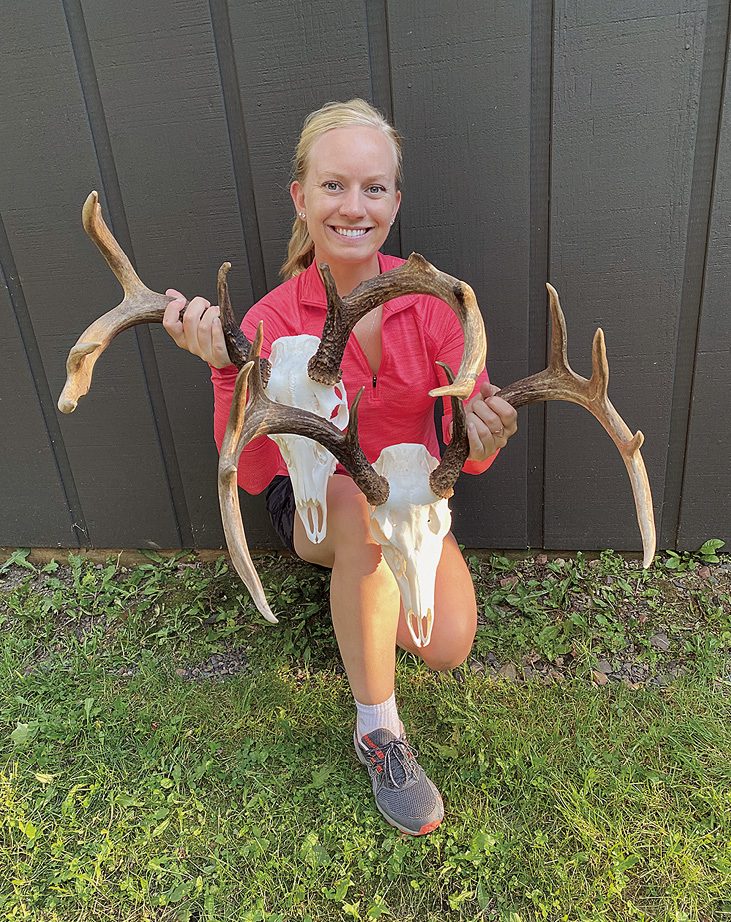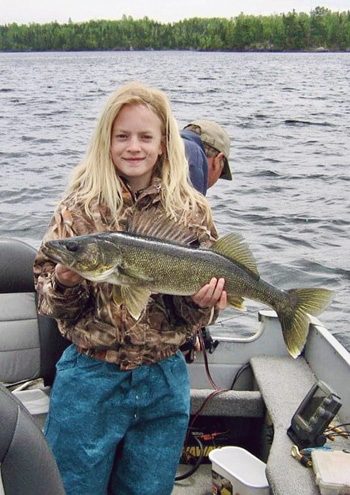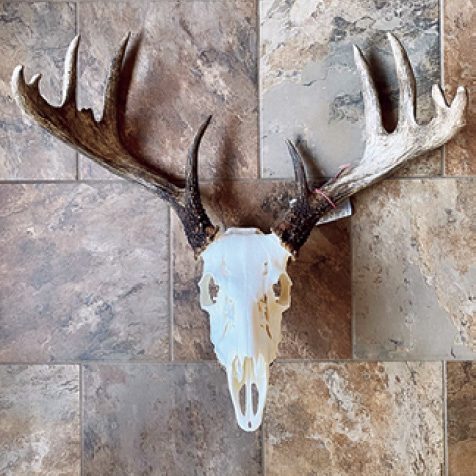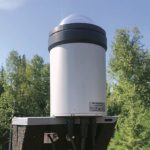Despite its notorious gales, November is usually a pretty quiet month on the North Shore.
By the time November rolls around each year, the leaves have all fallen and the temperatures have too. Forests are frozen and the lakes have started to harden, but it’s not quite ski season. November is the final transition before the long nights of winter.
For an outdoorswoman like Jessica Berg-Collman, however, November is one of the busiest months of the year. November is hunting season.
Berg-Collman is a passionate hunter, has been her whole life, but that is not the only reason why she gets excited when November rolls around. Three years ago, Berg-Collman decided to try her hand at creating European mounts [or “skull mounts” as they are sometimes referred to], and she has been “perfecting her method” every November since.
“I first started doing European mounts for friends and family,” says Berg-Collman, “just to see if I could do it—if I was any good at it.”

“It turned out that I was,” continues Berg-Collman, “so I started taking on more mounts and continued to perfect my method. Hunting is tough in our area—people have to be pretty lucky to get a buck—but this ‘side gig’ of mine has been growing, spreading mostly through word of mouth and social media.”
Berg-Collman was born and raised in Grand Marais and has lived in Northeastern Minnesota for most of her life.
“Actually, I was almost literally born on the Gunflint Trail,” says Berg-Collman, “somewhere near Swamper Lake in the middle of the night.”
“Throughout college and the years that I spent traveling,” continues Berg-Collman, “I was always drawn back to Northeastern Minnesota. Lake Superior is a powerful force in my life, I don’t think that I could ever part with it.”
Berg-Collman grew up surrounded by the Northwoods, and spent a good portion of her childhood in and around Saganaga Lake at the end of the Gunflint Trail. Some of her favorite memories are of times spent “taking naps and playing with minnows and leeches” on the floor of her mom Julie Collman’s boat, and visiting with the “life-long residents” of Saganaga Lake.
“One of my most memorable experiences as a child,” says Berg-Collman, “was visiting Betsy Powell and watching her shoot wolf spiders with a 22 cal. through her screen door. Growing up around these unique people is what inspired me to enjoy the outdoors in my own way, with independence and confidence.”
Today, Berg-Collman spends as much time as she can on the water each summer fishing for “hawgs” (what her and her family call walleyes over 28 inches in length) with her two white Labs Winter and Stormi. Her father, Mike Berg—owner of the Seagull Creek Fishing Camp at the end of the Gunflint Trail—is who Berg-Collman credits with her love of fishing for walleye.
“My biggest ‘hawg’ this summer was 31 inches,” says Berg-Collman, “but I’m waiting for a 33-inch fish to put on my wall. My dad has caught and released over a dozen 33-inch-plus fish so I know that they’re out there.”

Now, with the 2022 fishing season behind her, Berg-Collman is gearing up for hunting season and another season of mounts.
According to Berg-Collman, the process of creating a European mount—which is a mount where only the skull and antlers of an animal are displayed—is intensive. It takes her about four days from start to finish to complete a mount, and with the equipment that she has she is able to process three to four skulls at a time.
“I start by skinning the hide off of the deer head and boiling it in water,” says Berg-Collman. “Then, the tedious work begins.”
“I spend about an hour scraping the remaining flesh off of the skull and removing all of the unnecessary cartilage and bone,” continues Berg-Collman. “Once the skull is clean, I soak it in hydrogen peroxide. If the skull is ‘not fresh,’ it can take two weeks or more to turn white. Once it’s white, I let it dry in the sun before spraying it with a clear coat to give the skull a nice shine.”
Photos of Jessica Berg-Collman’s work can be found on her Facebook page, and for anyone lucky enough to harvest a buck this year, she can be contacted at jessica26june@gmail.com to have a buck mounted this hunting season.




